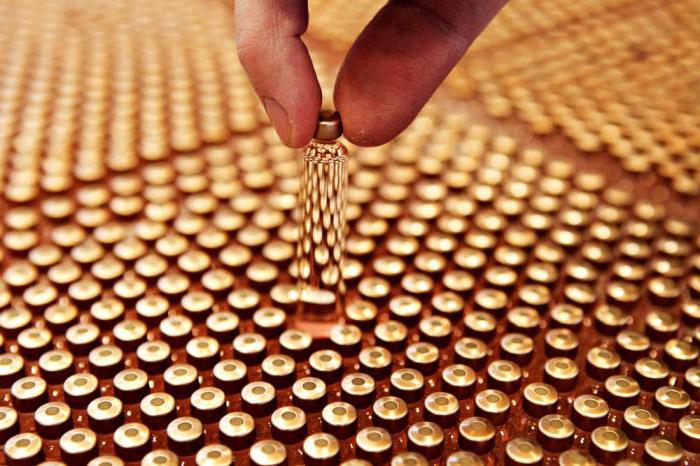Everyone who produces something with their own hands or at the enterprise knows what a product is. However, people far from industry do not always understand this very definition. From this publication, readers will not only be able to find an explanation of this term, but will also understand the types and classification of products based on various parameters.
Explanations
According to the regulatory framework and GOST approved by state services under the number 2.101-68, you can find out what a product is. This is, first of all, a piece item (part or finished product) or a set of different items manufactured at the factory and suitable for subsequent assembly.
Products are usually calculated in units of production, sometimes in copies. The main reason for such a clear terminology is the need for documentation at enterprises (production, warehouse, providing intermediate storage of products) and in companies involved in the sale of products.
In order to avoid confusion and substitution of concepts, there is a clear system according to which all products are divided into specific types, depending on their purpose, configuration and stage of production (development, testing or established production).
Product Part
In order to make it easier to understand what a product is, you need to understand what it consists of, what is its structure:
- A part is a product that is made from only one type of material and a single, integral piece. It is allowed to use additional or subsequent processing, but this should only be an improvement of the product (chrome plating, coating with paint, varnish, etc.), and not its processing or modernization. In this case, it will already be a new look.
- Assembly unit - these are elements of one product that require the application of measures for assembly and compilation of a single whole. But the complex is two (possibly more) separately manufactured parts of one product, which, as a result, must interact, however, for their assembly, connection with the help of special equipment is not necessary. The production of complex products also involves an additional set of special items of the main production item. For example, it can be fasteners, tools, containers or packaging material.
- By a set is meant a number of items manufactured or delivered in one set, they can be operated both individually and together, complement each other (a set of dishes, a set of wrenches).

Classification
There is a fairly extensive classification of production items by type, each of which explains the purpose, method of creation and characterization of products:
- Products of primary production are items that are produced at enterprises for the final consumer, with the aim of their further sale.
- Manufacturing products for auxiliary needs. They are necessary for the work of the organization itself or an associated industrial group, cooperation.
In addition, there are also consumer groups for which this or that product is designed. This is a fairly broad and conditional classification of production items, but it well demonstrates the structure of consumption of goods:
- Products suitable for meeting national economic needs - export, the general public, conducting business activities within the state.
- Products for industrial purposes - when a factory of products of this category is established, it works mainly for certain enterprises according to strictly limited nomenclature and strict standards.
- Products to meet consumer demand.
- Items, parts or complexes that are manufactured and delivered according to the approved plan for a particular customer.
- Products for the company's own needs.
There is also a breakdown by the number of copies produced - single (repeated and one-time), mass, mass production.
What are the products?
When there is a debugging of production, as well as subsequent operation of the line, technologists and controllers need to clearly monitor the quality of their products. To do this, they need to correctly determine what a product is, what is its normal appearance and when should adjustments be made to the enterprise. At the same time, production items are divided into suitable and defective. The first are made in accordance with all the requirements stated in the technical documentation. Defective include any part or component with a clear discrepancy with the specified standards.
Other signs of product quality include:
- completeness, which is installed according to the instructions and accompanying documentation;
- novelty (outdated or modern);
- level of manufacturability.
Who makes the products?
The main objects of production of various products are specially equipped enterprises - plants, factories, workshops. Their work is debugged and normalized - enterprises of this level work most often in a planned manner. The adjustment of new lines, the modernization of existing ones often also occurs on schedule, as large enterprises do not accept the introduction of serious adjustments to their work.
However, there are craftsmen who produce single products with their own hands. These are items that are not consumer goods and demand, but are made to order according to previously agreed parameters.
Product Development
All products, regardless of their purpose, go through certain stages of production. The very first is development. Special engineering departments deal with it.
But the design and subsequent placing of products on the line is impossible without the coordination of intermediate stages and options. Among the most significant distinguish:
- simulation followed by testing;
- creation of a layout and its testing, improvement;
- product execution with subsequent collection and analysis of the results;
- creation of norms, names and characteristics for the finished product.
Finished products may have different possibilities for subsequent operation, for example, some are repaired, others are not. Most often, this factor determines whether the model is collapsible or solid, which also determines the possibility of after-sales service.